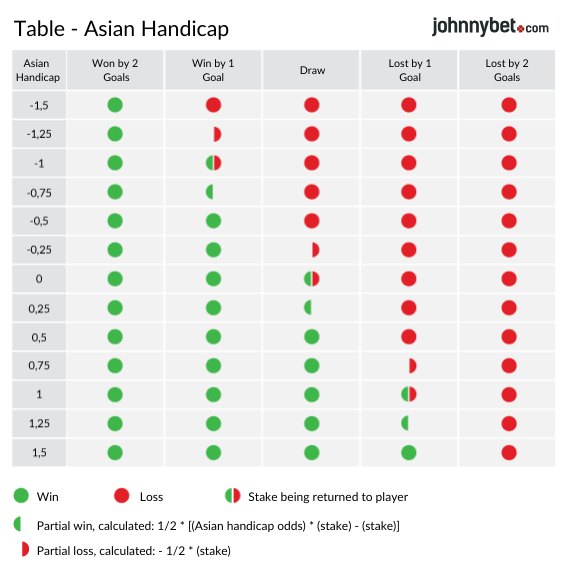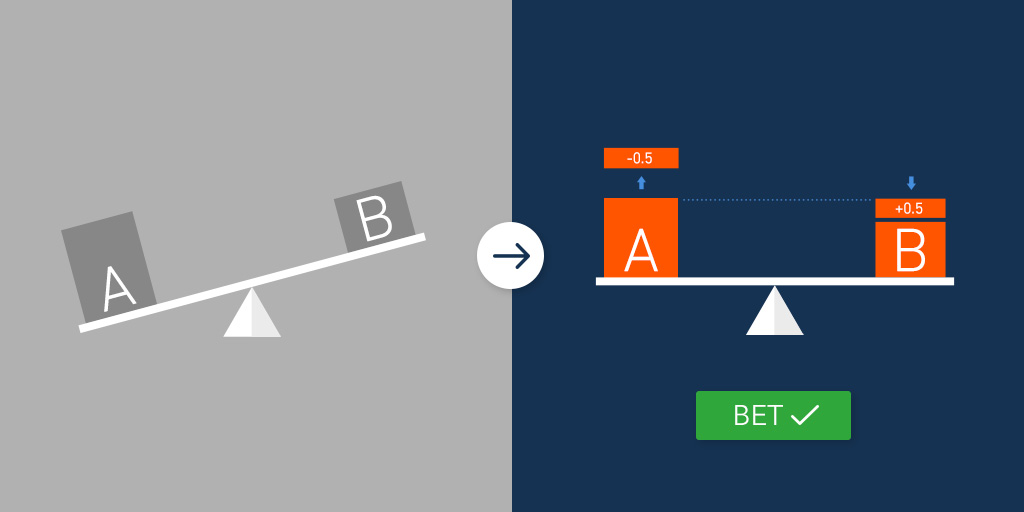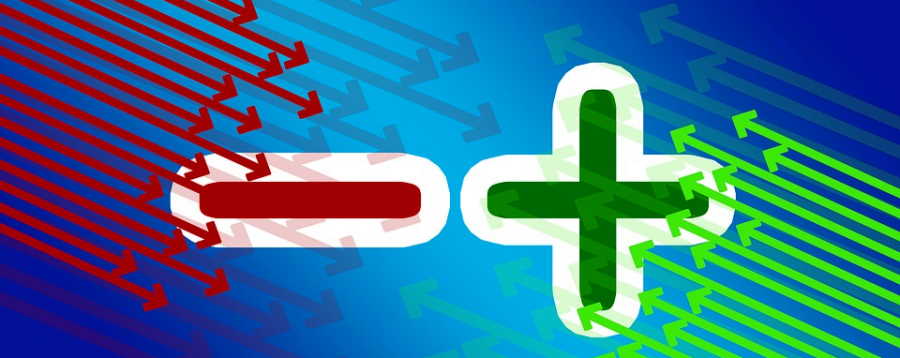In Betting What Does Handicap Mean
Handicap betting is a market offered by most bookmakers and is available on various sports. The whole reason for handicap betting is to give an advantage in points or goals to the weaker team, in any given match. It would be a bit boring if you were to bet on say Man City vs your local pub team, as there's going to be one winner clearly.
What Does Handicap Means In Soccer Betting
- Also known as line betting, the spread, points betting, or Asian handicap, handicap betting is the process whereby a bookmaker turns a sporting event in which there are varied odds into an even money contest, by giving a virtual advantage or disadvantage to certain competitors in order to even the field.
- 5 and range between +/- 0.5, 1.5, 2.5 and so on. Asian Handicap betting with the half line + 0.5 means that the team you bet on starts the match with a positive Asian Handicap value of a 0.5 goal lead. This means you win if the team you placed a bet on wins or if there's a draw.
Handicap betting is a type of betting used across a wide range of sports, usually to even out the odds when one side is a clear favourite. One side is given a head start – be it of goals, points or games depending on the sport or event – whilst the other side starts on minus the equivalent number.
What is the difference between a handicap and an Asian handicap?
Both types of handicap operate in a similar fashion but with an Asian handicap there is no option for the draw. For example, in football, if an Asian handicap is given as Man United -1 v Everton +1, in the event that Man United win by a single goal your bet is a “push” and the stake is returned. In contrast, a standard handicap would have the options above as well as a tie based on the one goal handicap, meaning Man United need to win by two to win, if they win by one it is a tie and if Everton draw or win then that selection wins.
To put it simply, an Asian handicap has just two options, whilst a handicap has three.


What do all the different handicap options mean?
There are a huge range of different handicaps offered and some of these can look quite confusing but it is actually quite simple. In a standard handicap there are no complex options and the handicap will always be a whole number. This is easy enough, with a team needing to triumph by more than their handicap for you to win the bet. If they win by the exact handicap then the draw/tie bet wins and any less, or a draw or a win for underdog, and that side wins.
However, Asian handicaps can have a confusing number of different options. One of the easiest is a simple half goal handicap. So, for example, it may be Arsenal -0.5 v Spurs +0.5. This one is a very simple bet, with any win for Arsenal enough for them to overcome the handicap, whilst any draw or Spurs win sees Spurs win.
Asian handicaps given with a single, whole number, for example Man United -2, allow for a “push” or void (with the stake refunded) in the event that the scores are level with the handicap taken into account, in this case Man United winning 2-0. This makes the Asian handicap market -0, the same as a standard “draw no bet” market.
Things may seem to get more complex when the handicap is quoted either as two numbers, or as a quarter or three quarters of a goal. For example you may see Chelsea +1, +1.5, which is the same as Chelsea +1.25. Similarly you may see Chelsea +0.75, which can also be written (it varies from bookmaker to bookmaker) as Chelsea +0.5, +1.
In this instance your bet is split between the two different handicaps, so, for example, £100 on Chelsea +0.75 is effectively having £50 on Chelsea +0.5 and £50 on them with a +1 handicap. If Chelsea lose by a single goal then you lose the half that was +0.5 but get your stake returned on the +1 portion of the bet. If they lose by two goals you lose everything whilst if they draw or win then both sides of the bet win.
Handicaps and Asian handicaps can certainly seem a little confusing at first but once you place a few bets you’ll soon get the hang of them. They are great way to hedge your bets, with the Asian +0.5 meaning you win if the team wins or draws; they are also a way to get a bigger pay-out, for example if you are confident a team will win by two you might back them -1 or -1.5 at considerably longer odds that they would be in the outright market; and they are also a way to back the underdog to do well, even if you don’t think they’ll have enough to win or perhaps even draw, with the +1.5 Asian handicap a great option if you think the less fancied side will keep things to a single goal defeat or better.
In summary handicap betting is a fun and useful betting tool that gives you greater flexibility and more ways to profit, so why not it out today?
virtual head start
More than that, what does +0.5 handicap mean?
5 and range between +/- 0.5, 1.5, 2.5 and so on. Asian Handicap betting with the half line +0.5 means that the team you bet on starts the match with a positive Asian Handicap value of a 0.5 goal lead. This means you win if the team you placed a bet on wins or if there's a draw. If the team loses, you'll lose your bet.
Still further, how do you win a handicap bet? Each team receives a handicap of plus or minus points to reduce the game to an even competition. A team with a minus handicap must win the event by more than the handicap for your bet to win. A team with a plus handicap can win the game or must not lose the event by more than its handicap for your bet to win.
One may also ask, what is an example of a handicap?
An example of a handicap is a race where heavier people have to carry less weight and the lighter people have to carry more weight. An example of a handicap is a broken leg. Handicap is defined as to cause a disadvantage. ... A physical or mental disability.
What is a handicap draw in soccer?
When betting with a handicap, an advantage or disadvantage is applied to a team within the regular time (only). To win your handicap bet, the final score of the selected team must be higher than the one of the other team. With the 2 goals advantage that Sweden has, it would result in a draw. ...
18 Related Questions Answered
Is a 1 handicap good?

What does 3 Way Handicap mean?
What is a 2 Way Handicap bet?
What does Handicap 1.5 means in tennis?
What does Handicap mean?
What does over 0.75 goals mean?
What is the best way to define a handicap?
What is the difference between disabled and handicap?
Is every person with disability a handicap?
What is match winner 3 Way?
How do you bet a handicap in soccer?
How do you bet a handicap in football?
What's my handicap if I shoot 85?
What's my handicap if I shoot 90?
In Betting What Does Handicap Mean Spiritually
Is a 15 handicap good?
Is betPawa real?
What is the meaning of 0 2 handicap?
Asian Handicap Betting
